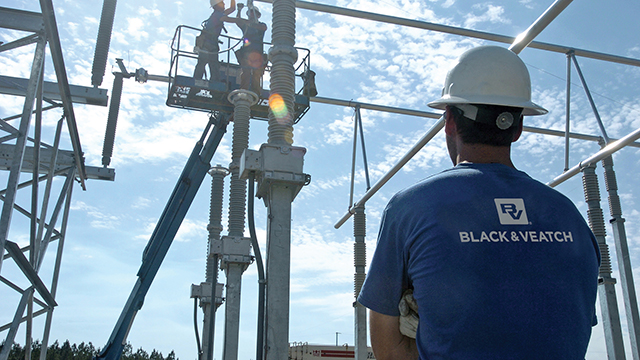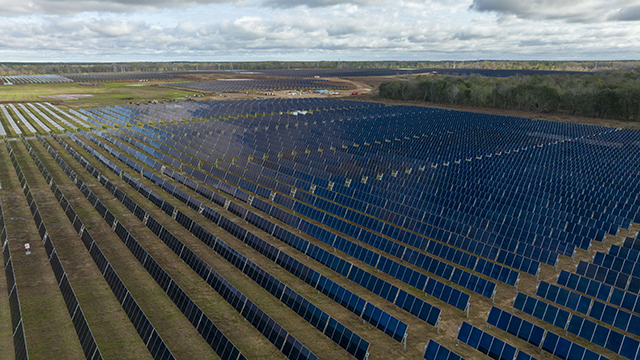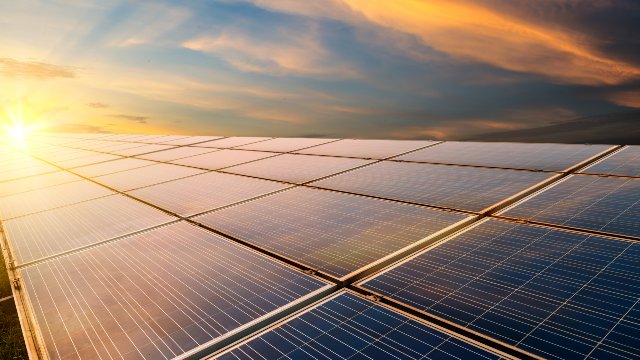Reliable service always has been core to every utility’s mandate, but achieving this is becoming more complex in the face of aging infrastructure and increasingly frequent and intense extreme weather events. As this report was being drafted, the second major hurricane of November (Category 3 or higher) made landfall in Central America as a Category 5 storm, with wind speeds accelerating from Category 1 to Category 4 in just 24 hours over abnormally warm seas. Similarly, wildfires continued to burn in parts of Colorado, months after the historic end to fire season.
It is with these varied factors in mind that in order to sustain reliability, utilities across the board recognize the need to be more resilient than ever. Starting nearly a decade ago, resiliency became the battle cry for utilities after the extensive damage of Superstorm Sandy, while Hurricane Harvey in 2017 was a wakeup call for the Gulf Coast.
Today, that battle has intensified. For example, despite maintaining reliability through the unprecedented conditions of the pandemic, electric utilities still struggled with extended outages in the wake of historic wildfires in California, storms in the Northeast and hurricanes in the Gulf of Mexico. Customers and regulators are not just asking but are demanding to know the return on investment of utility investments for ratepayers when extended outages remain a reality after weather events.
Unsurprisingly, when asked about the top challenges facing today’s electric utility industry, the majority of respondents cited improving reliability, followed by asset management and, almost equally, improving resilience.

According to our research, water utilities face the most aggressive resilience challenge from climate change, as more frequent droughts and unpredictable patterns of intense precipitation affect their ability to rely on reservoirs and other surface water resources while they also have to tackle aging infrastructure and the need to manage aging workforce. Whether it’s less rain in increasingly populous regions or inundations from increasingly powerful storms, more than half of respondents to our 2020 water industry survey are actively planning for climate change, employing strategies to bolster resilience that include seeking new groundwater sources — including investigating technologies for groundwater recharging — and adding reuse capabilities to help diversify supply.
One resilience strategy that is becoming increasingly important for both electric and water utilities is the pursuit of expanded and more integrated planning across their business silos. Water utilities are embracing programmatic solutions to mapping out resilience, including the popular One Water approach advocated by the U.S. Water Alliance, as well as the U.S. Environmental Protection Agency’s (EPA) integrated planning process.
Electric utilities are broadening their planning lens to look at integrated resource blueprints that include supply and demand across central and distributed assets. They also are reconsidering physical grid-hardening strategies and exploring non-wires alternatives to boost resilience. As they recognize the growing threat — and cost — of prolonged outages, policymakers and regulators are showing more willingness to rate-base expensive hardening investments.
As with utilities across all sectors, the ability to embrace emerging opportunities to build resilience is largely determined by regulators. Because of this, utilities cite regulatory factors as the top risk they face. Amid rapid climate and technological change, electric utilities fear that regulators will not be able to keep pace with their need to invest in grid modernization approaches — and, in turn, cause them to lose customers to third-party competitors such as distributed solar providers, which offer the resilience and sustainability benefits they seek.
The growing mismatch between customers’ expectations of the benefits of technology adoption, such as advanced meters, and regulatory incentives to adopt those technologies, can lead to negative publicity when outages occur, leaving customers to wonder, “What have you been doing with my money if you can’t keep the lights on in a storm?” Utilities in our survey cited customer expectations as the second-greatest risk they face — behind regulatory risk but ahead of the interrelated risks of climate change, technological change and environmental compliance. For example, some utilities still message their customers to contact the utility if the power goes out, despite the fact that they’ve deployed smart meters that automatically provide that information to the utility.

Some regulators are adapting, especially in hard-hit areas such as Florida, which is battered by more hurricanes annually than any other state. In 2019, the Florida Public Service Commission adopted new rules that would allow utilities to recover costs of system-hardening investments. Senate Bill 796, signed into law by Gov. Ron DeSantis in June 2019, enables the state’s investor-owned utilities to levy a separate charge — outside of its base rates — to pay for undergrounding vulnerable power lines and other equipment to make them more resilient to hurricanes.
But reliability and sustainability do remain in conflict. In some regions, particularly in the Northeast, the mid-Atlantic and California, utilities increasingly are limited by growing opposition to natural gas, highlighting a potential tension between sustainability and resilience objectives in the near term. This conflict was on display this year in California, where Pacific Gas & Electric lacked sufficient gas resources and secondary power supply sources to meet the demands of heat waves and wildfires; and in the Northeast, where the Atlantic Coast Pipeline was cancelled despite aging existing pipeline infrastructure and repeated gas price spikes during winter months. But technology could render this sustainability-versus-resiliency issue moot in coming years, as demand-side resources and new technologies such as green hydrogen are brought into more comprehensive utility planning.








